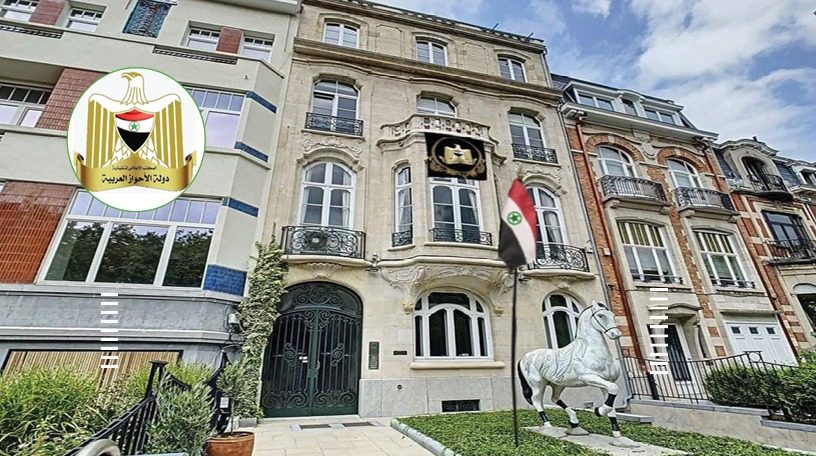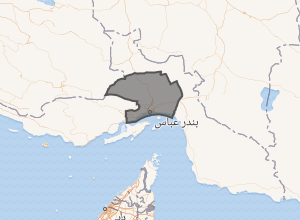Environmental and humanitarian disaster 74% water deficit in Ahwaz dams
The Iranian occupation has stolen the wealth of the Ahwaz people from water, oil, minerals and other wealth owned by the occupied state of Al-Ahwaz, which is the richest region in the region, as its lands contain, according to some estimates, 80% of the oil produced by Iran, and about 33% of the wealth Several rivers pass through the region, such as the Karun, Karkhah, and Al-Jarrahi…. rivers, Where the course was changed and the water of the Karun River was transferred from Ahwaz to the Persian cities. The largest river in the region witnessed repeated course changes years ago to other provinces in the Persian depth, to confront the water problem However, these policies have caused a scarcity of drinking water in the region, and a sharp decrease in the level of irrigation water needed for thousands of hectares of agricultural land, which led to the spread of desertification, the increase in dust storms, and damage to the environment in general, as well as the displacement of Population from desertified areas, especially peasants, to different cities.
And the Department of Water Resources Planning for Ahwaz Dams and Rivers revealed that the useful volume of dams in the province is 1 billion and 200 million cubic meters, and he said: “Despite the recent rains, we have a water deficit of 74% in normal dams compared to normal conditions.”
The Water Resources Planning Department of Ahwaz dams and rivers warned of the situation, describing it as very dangerous, with water reserves declining in Ahwaz dams.
Ahwaz witnessed the first actual rainfall in the period from December 16 to 30, 2021 and as a result of the rainfall, the volume is about 800 million cubic meters of water entered the reservoirs of Ahwaz dams and was stored in them. The useful volume of water in Ahwaz dams is 1 billion and 200 million cubic meters, and despite the recent rains, there is a water deficit of 74% in Ahwaz.
The Water Resources Planning Department of Ahwaz Dams and Rivers indicated that only 9% of the usable volume of Ahwaz dams are full: “Currently, we have a big difference and the distance compared to normal conditions and even compared to last year.
The water shortage constitutes a major crisis for the cities of Ahwaz, especially for the drinking and irrigation sector, in light of the Persian occupation’s dependence on Ahwaz water and its theft and transfer of it to the Persian cities in clear violation of international law and human rights. Last April, officials warned of a severe drought for Ahwaz cities similar to the drought of 2018.
Earlier, human rights reports warned of an environmental disaster after the Persian occupation authorities carried out the process of transferring the river’s water, which reduced the flow of water into the Tigris River. Water levels have been reported to drop dramatically each year, especially during the summer months, as a result of upstream dams in Iran.
And the occupying power began constructing three major dams on the Lower Rab River; Zardasht Dam began filling its reservoir in 2017 for the purposes of hydroelectric power generation, while the Silveh Dam, completed in 2018, was built, and the Kani Seb dam is “in operation” to transfer water between basins from the Lower Zab to Urmia in occupied Kurdistan in an attempt to restore the lake, and The Zab River water transfer project is considered one of the most important water basins, and the transfer of water to Sebukani Dam from groundwater is one of the most serious environmental degradation projects in occupied Kurdistan.
Environmental reports also revealed that the Karun River in Ahwaz is facing a serious danger with the Persian occupation diverting the river’s water through building dams to Persian cities and leaving Ahwaz without water.
The Karun River passes through the center of the city of Ahwaz, with a length of 950 km, and it is one of the most abundant rivers in water, and its discharge usually reaches a rate of 560 cubic meters per second. This caused parts of the river to dry up.
The construction of many dams on the Ahwaz rivers and the diversion of its waters into the Persian cities in recent years has exacerbated the negative effects on the environment and agriculture, as well as caused the deterioration of the health and living conditions of the Ahwaz citizens and the spread of diseases and epidemics in the region.




